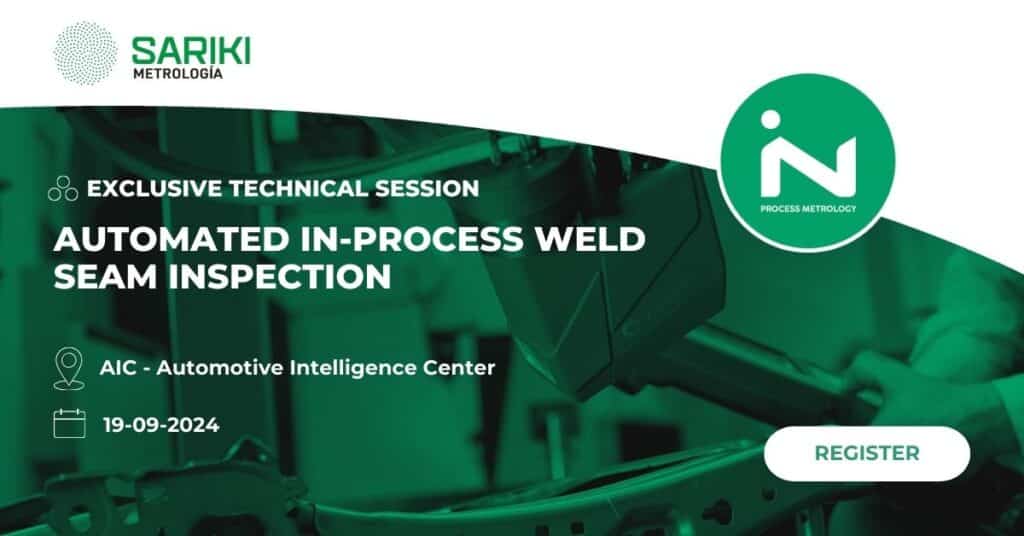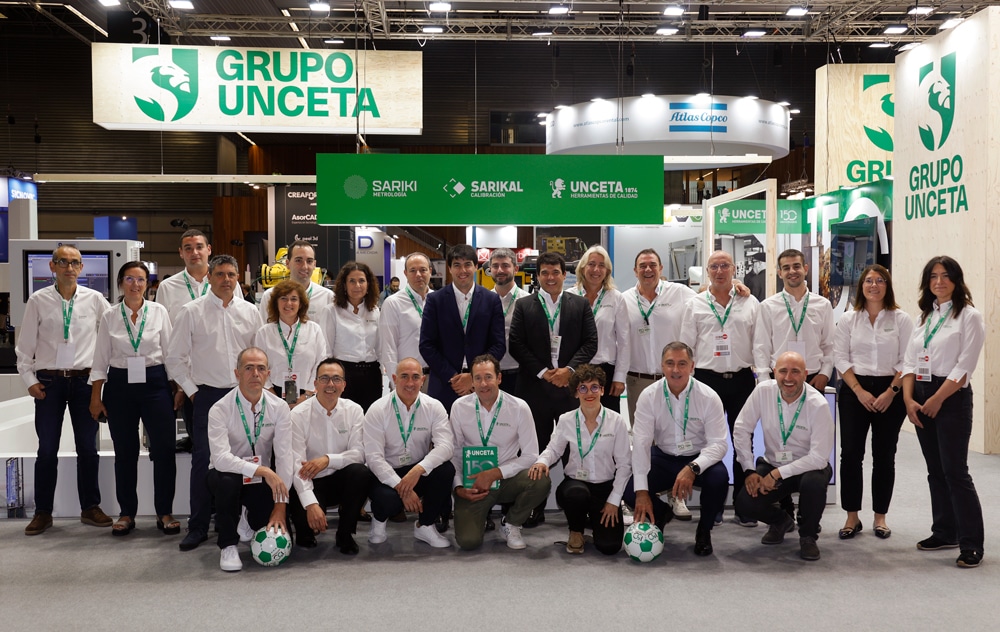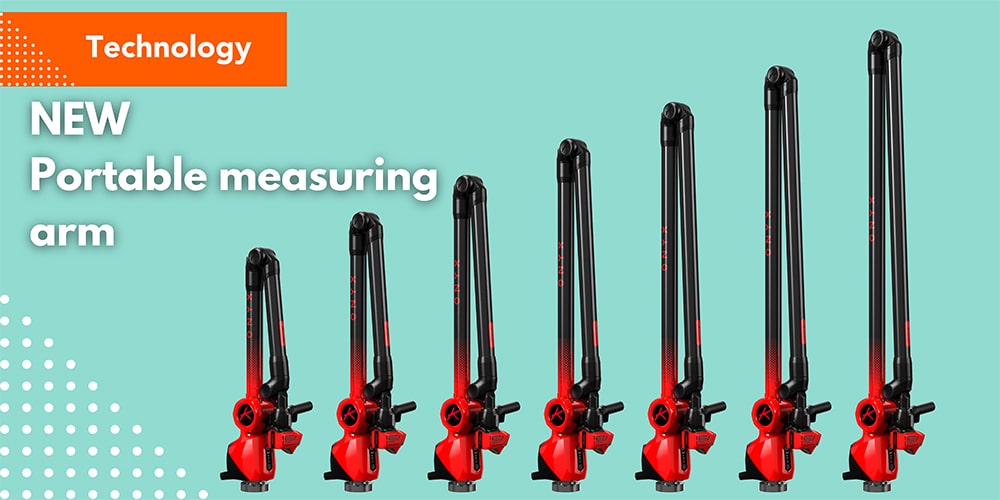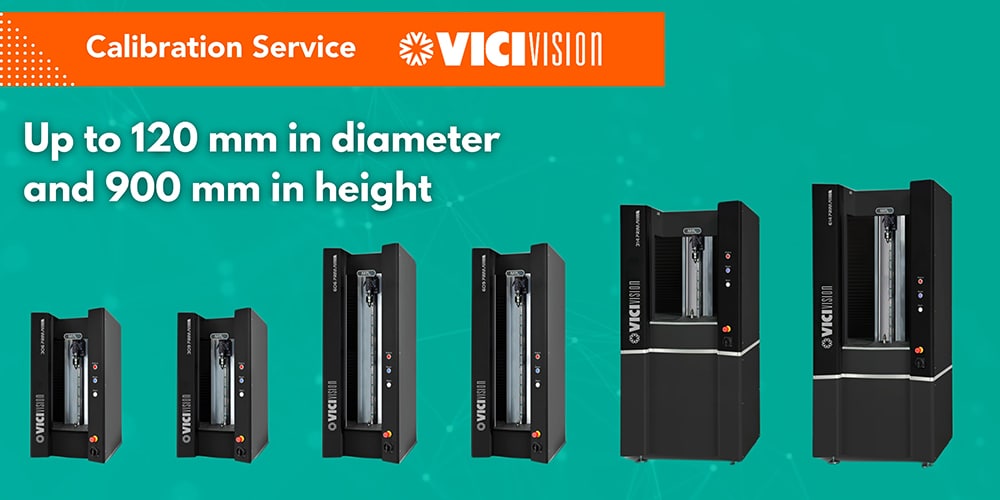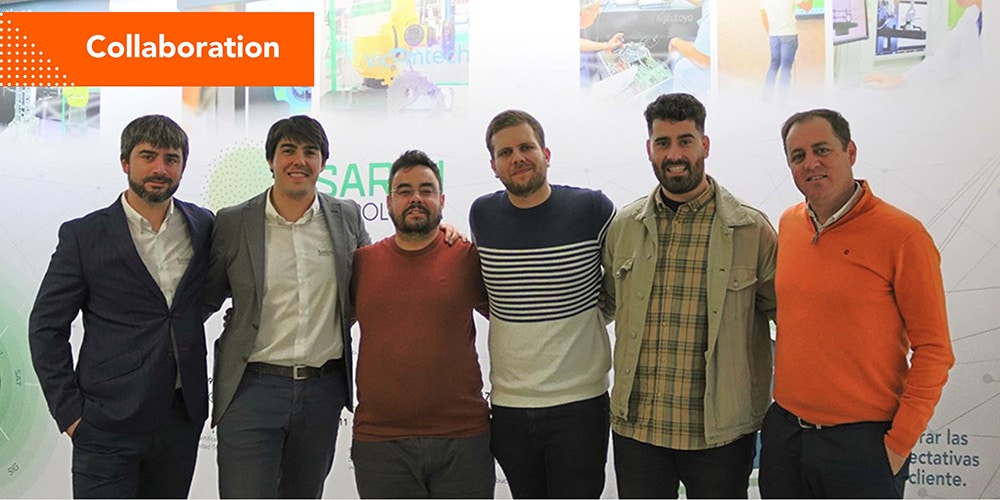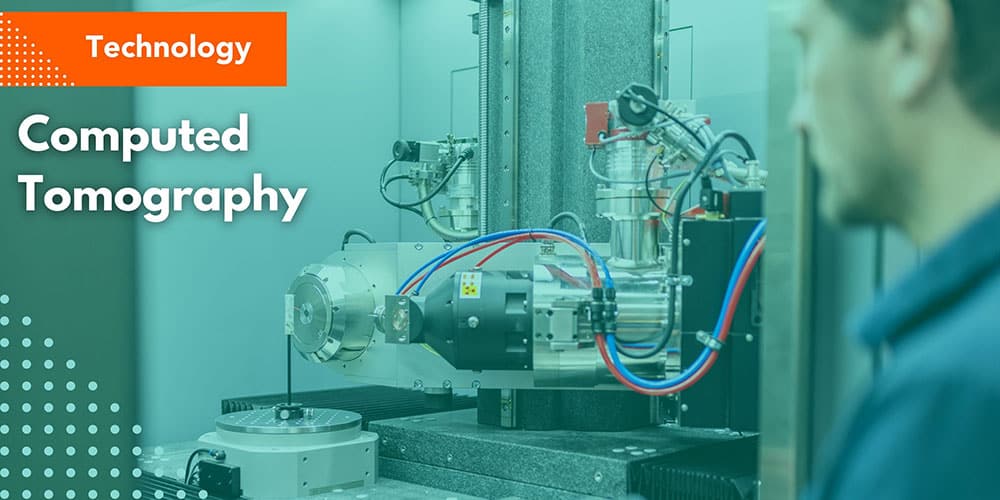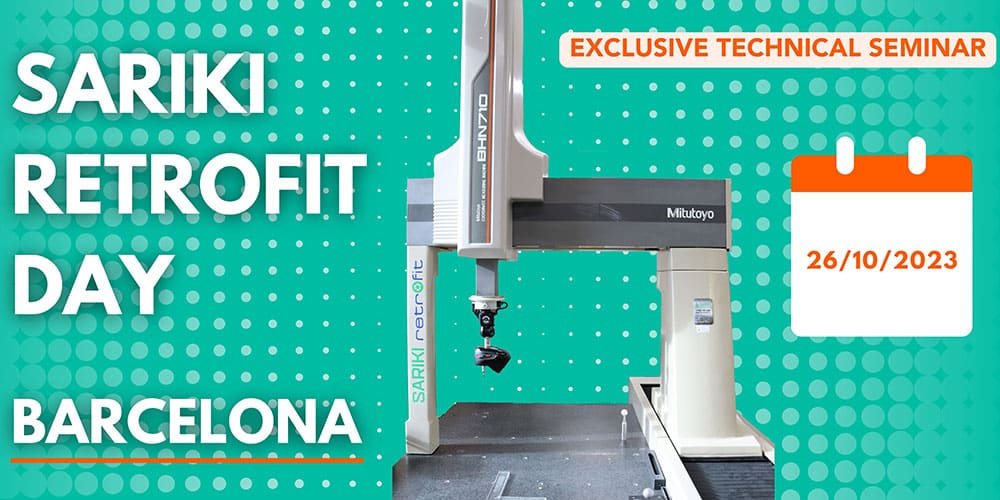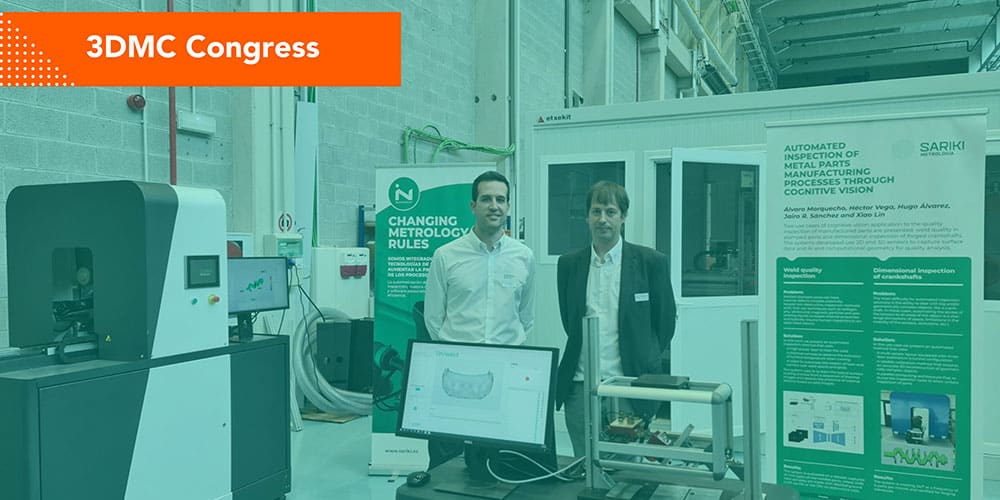Improve the inspection of plastic injection components by industrial tomography
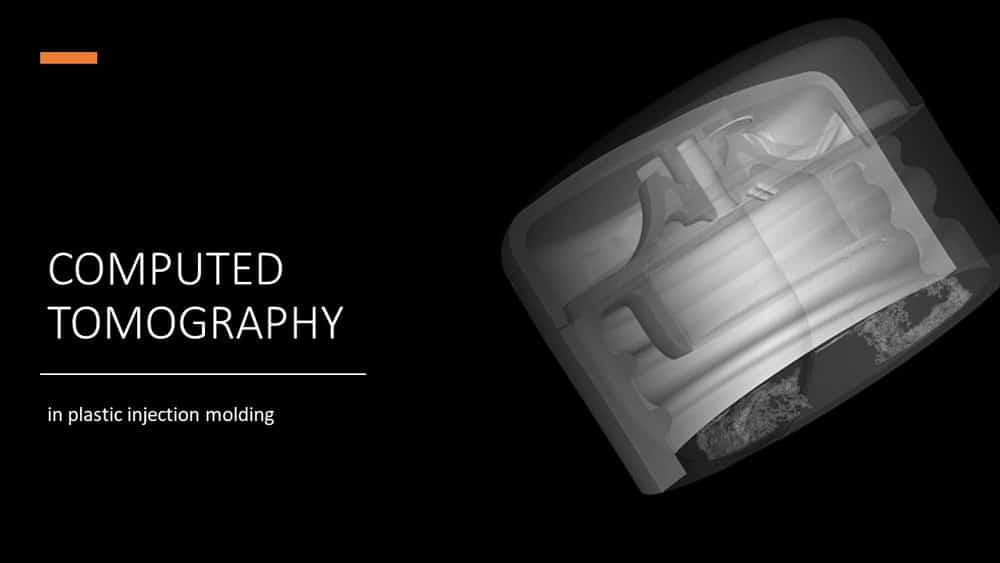
Plastic injection molding, a widely-known manufacturing process, creating millions of parts every day.
Thermoplastics and thermosetting polymers going through plastic injection moulding process are used for many common components such as bottle caps, storage containers, medical equipment, electrical casing, toys... Nowadays, this advanced process is even able to handle multi-material injections in order to improve density, rigidity or to provide colours, transparency and textures for a given specification.
However and because it is its main goal, plastic injection moulding machines have been designed to produce high volumes of the same part. Once adjusted, the whole process needs to be verified regularly in order to maintain the finished products characteristics. Plastic components are often tested for their visual aspect, mechanical resistance and waterproofness.
Moreover, obtaining the perfect geometry for a wanted plastic part is often a long path with several optimisation steps for the material, the mould shape and the parameters having an influence on the solidification. Even if simulation tools are more and more powerful, many factors are still optimized with measurements and analyses made on prototypes. The key for this industry is to reduce the time spent optimizing the process so that production lead times are minimized.
Industrial X-Ray Computed Tomography is very well suited to plastic injected components
Even if traditional inspection methods such as Coordinate Measuring Machines (CMM) measurements or optical scanning can bring interesting results, they might need to be completed by X-Ray CT for a lot of applications.
X-Ray CT is particularly well adapted for plastic parts because of the relatively low density of common material used. Polyamide, polycarbonate, polyester, polypropylene and polyethylene are all very easily penetrated by X-Rays and determine low artefacts. It means that getting the inner and outer dimensions of parts will not be an issue for X-Ray CT technology: whatever the size of the sample, results obtained will be very accurate and obtained faster than with conventional techniques.
Contrary to other technologies, X-Ray CT does not need any particular preparation on the sample to be checked. No spray, no stickers, no probing program, the only thing that needs to be done before launching a scan is to choose a good orientation and an adapted sample holder to accommodate the part inside the system. Then everything can be automated and well-integrated in a fully robotised production line.
It is also possible to generate a mesh from external and internal structures quite easily with X-Ray CT. Point clouds can then be used as input parameters inside a finite element model, to perform comparison against an existing CAD file or create a new CAD through a reverse engineering process. The finite element analysis allows simulations to be more accurate by computing mechanical stress, strain, displacement or flow behaviour on the real part geometries taking voids, porosities, dense inclusions or cracks into consideration.
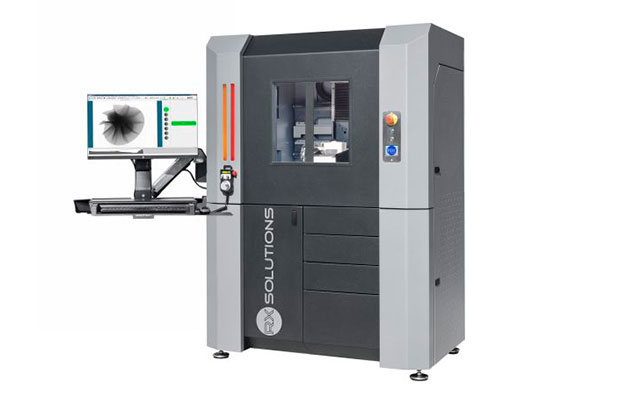
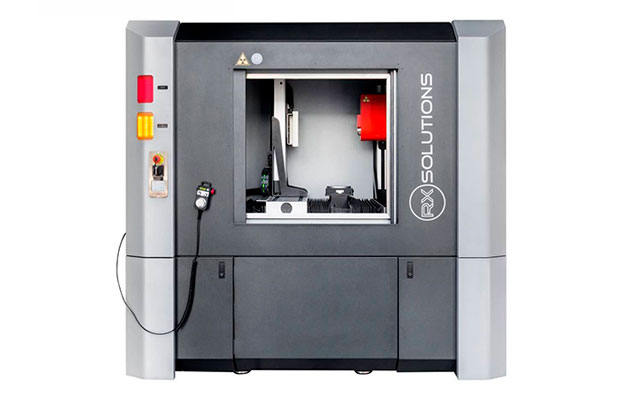
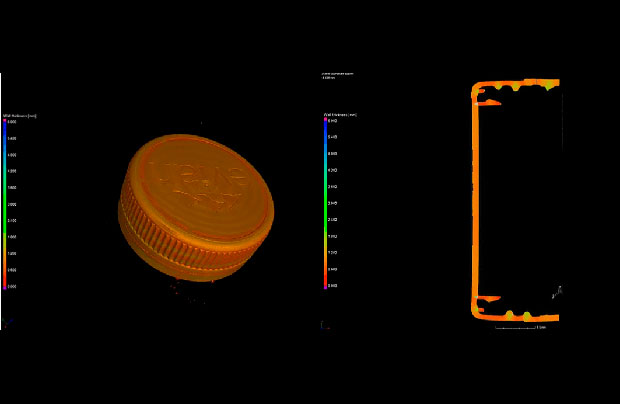
Results provided by X-Ray CT are very useful for injection moulding process in the industry
Random sampling, prototyping, first article inspection and mould geometry optimisation do not have the same goals and need different kind of analyses. X-Ray CT and high quality standard RX solutions systems can bring an important variety of results. It includes metrology reports, voids and inclusions investigations, assembly analyses, flush and gaps observations, wall thickness repartitions and fiber orientation statistics.
One of the main applications of X-Ray CT when talking about plastic injection moulding industry is the mould design optimisation. It is indeed one of the longest tasks to achieve when launching a new plastic part production. Warpage and shrinkage have to be measured and taken into account in order to modify the mould geometry. One of the best ways to obtain inner and outer shapes of an injected prototype is then to use X-Ray CT. It is effortless to generate a three-dimensional mesh of the whole part, compare it to the Computer Aided Design (CAD) model and modify, according to the differences, the related mould. The comparison of the geometry of the moulded part can occurs with a CAD file or a master samples, or between singles features, among different moulders, materials or after heat treatment or wear.
Another major analysis that can be carried out with X-Ray CT is the material health test. Once launch in production lines, main defects that can be found for plastic injected parts are linked to porosities due to entrapped air during the process and inclusions present in the raw material. They both can be detected and localised automatically within a few seconds with X-Ray CT.
Accurate inner surface determination is possible thanks to a very good penetration of X-Rays in plastic materials. Manufacturers are able to obtain 3D models of their injected parts in order to improve finite element models used to calculate minimal dimensions in order to save as much material as possible. This capacity to measure, accurately and all along the part, its wall thickness is unique and can allow engineers in charge of the design to save money by reducing weight of parts.
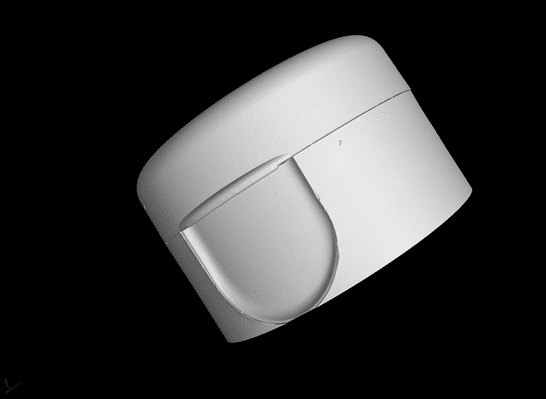
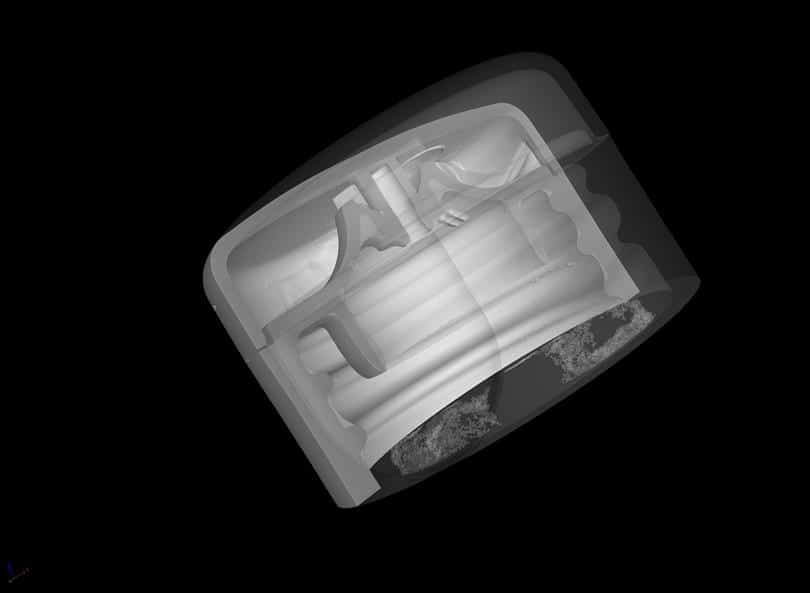
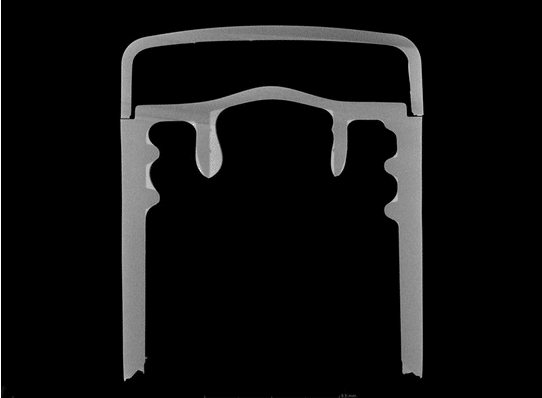
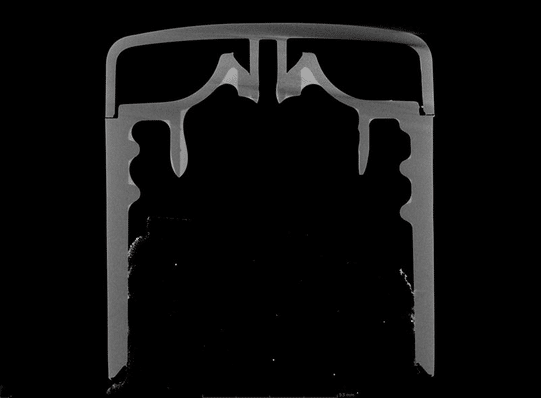
It is also possible to generate a mesh from external and internal structures quite easily with X-Ray CT. Point clouds can then be used as input parameters inside a finite element model, to perform comparison against an existing CAD file or create a new CAD through a reverse engineering process. The finite element analysis allows simulations to be more accurate by computing mechanical stress, strain, displacement or flow behaviour on the real part geometries taking voids, porosities, dense inclusions or cracks into consideration.
